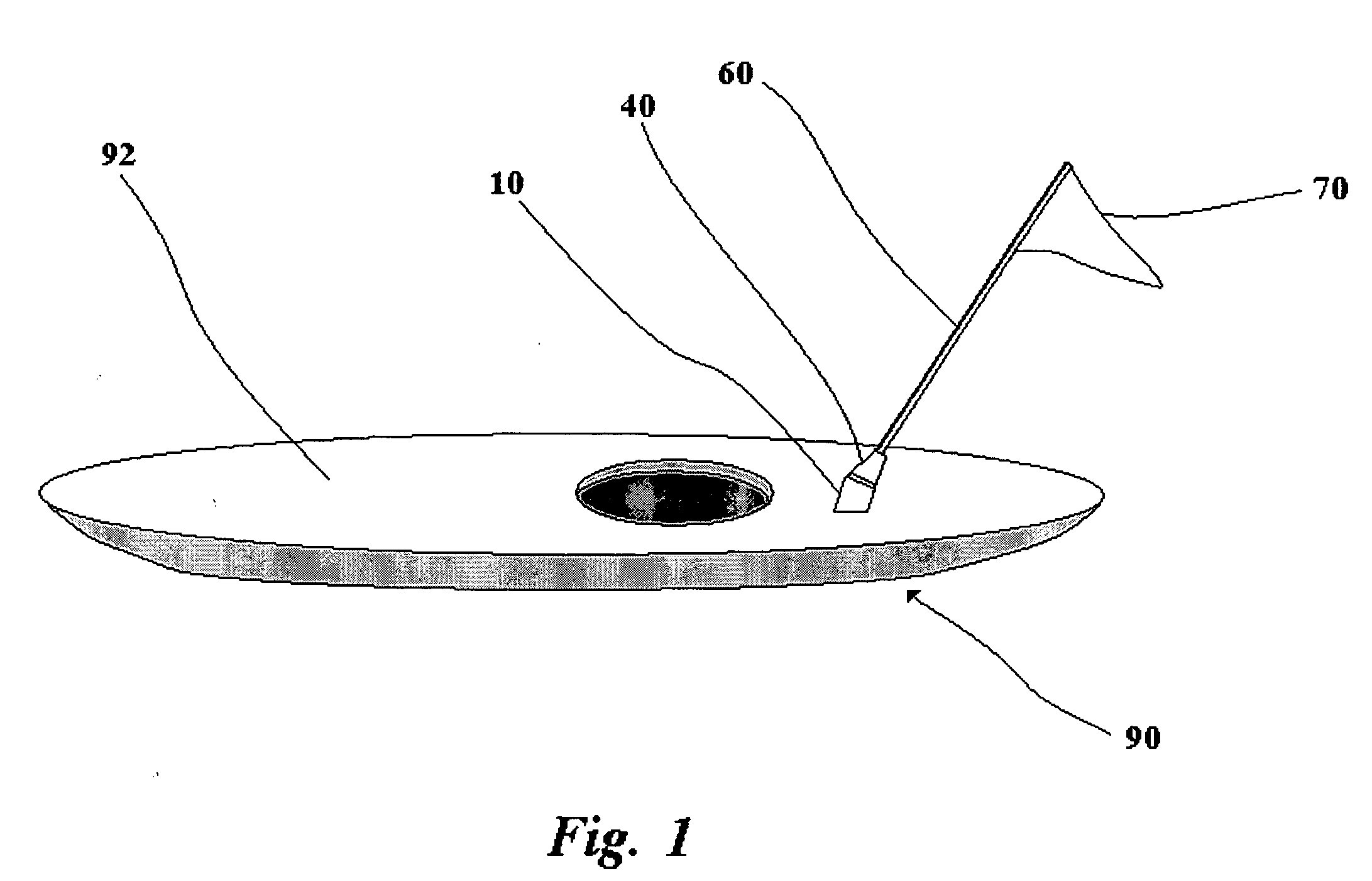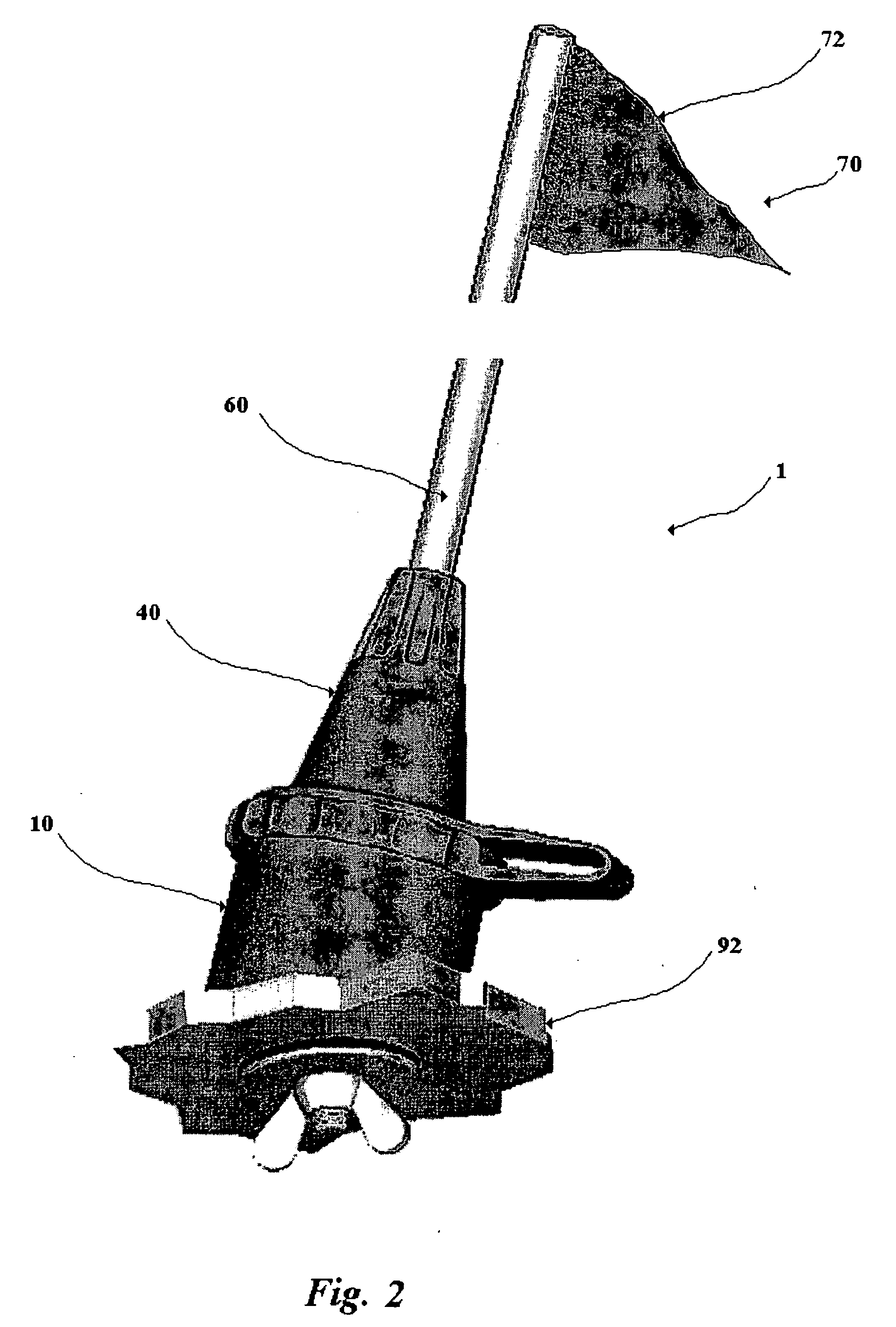Safety signaling apparatus for watercraft
a technology for signaling apparatus and watercraft, which is applied in the direction of buoys, floating buildings, and route markings with anchored lightships, can solve problems such as dragging the mast through the water, and achieve the effect of increasing the visibility of the watercraft and increasing the safety of watercraft operation
- Summary
- Abstract
- Description
- Claims
- Application Information
AI Technical Summary
Benefits of technology
Problems solved by technology
Method used
Image
Examples
Embodiment Construction
[0028] The present invention is a safety signaling apparatus intended to used with a personal watercraft, as shown in FIG. 1. The invention comprises four principle components: a base member 10, a retention member 40, a mast 60, and a signaling device 70. See FIGS. 1 and 2. The base member 10 of the present invention is suitably adapted to be removably attached to an upper surface 92 of a watercraft 90. The base member 10 is intended to remain attached to the upper surface 92 of a watercraft 90 except for maintenance purposes, repair or replacement of the base member 10, or installation of the safety signaling apparatus 1 on another watercraft, at which time the base member 10 may be easily removed from the watercraft 90. The base member 10 is removably attached to the upper surface 92 of a watercraft 90 by a watercraft attachment means and is removably attached to the retention member 40 by a retention attachment means. The watercraft attachment means and the retention attachment m...
PUM
 Login to View More
Login to View More Abstract
Description
Claims
Application Information
 Login to View More
Login to View More - R&D
- Intellectual Property
- Life Sciences
- Materials
- Tech Scout
- Unparalleled Data Quality
- Higher Quality Content
- 60% Fewer Hallucinations
Browse by: Latest US Patents, China's latest patents, Technical Efficacy Thesaurus, Application Domain, Technology Topic, Popular Technical Reports.
© 2025 PatSnap. All rights reserved.Legal|Privacy policy|Modern Slavery Act Transparency Statement|Sitemap|About US| Contact US: help@patsnap.com



